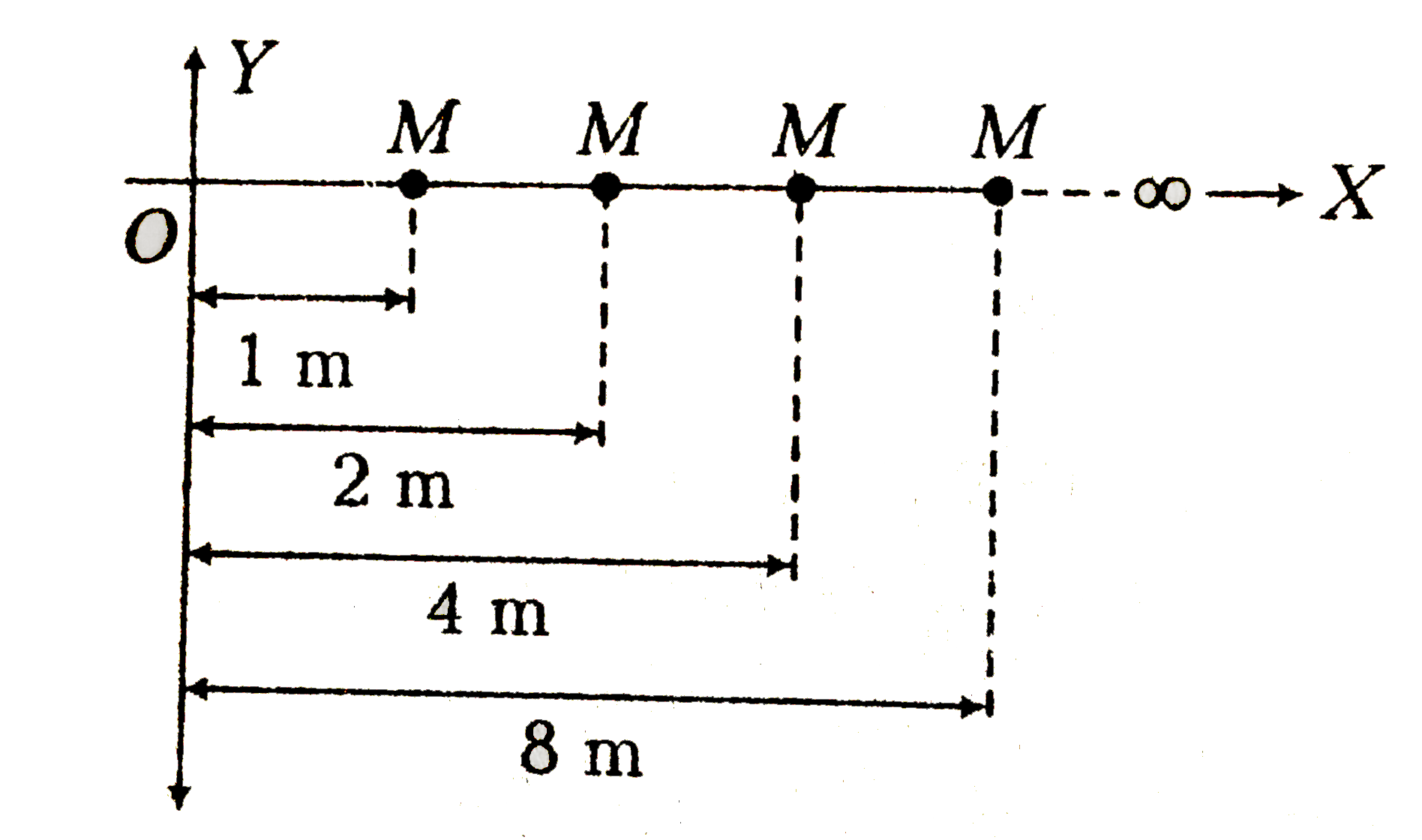If the gravitational field intensity at a point is given by g=GMr2.5. Then, the potential at a distance r is
−2GM3r1.5
−GMr2.5
2GM3r1.5
GMr3.5
The correct Answer is:A
To find the gravitational potential V at a distance r given the gravitational field intensity g=GMr2.5, we can follow these steps:
1. Understand the relationship between gravitational field intensity and potential:
The gravitational potential V at a distance r from a mass M can be calculated using the relationship:
V=−∫Edr
where E is the gravitational field intensity.
2. Set up the integral:
Given g=GMr2.5, we can substitute E with g:
V=−∫r∞GMr2.5dr
3. Change the limits of integration:
We will evaluate the integral from infinity to r:
V=−∫r∞GMr2.5dr
4. Evaluate the integral:
The integral can be simplified as follows:
V=−GM∫r∞r−2.5dr
The integral of r−2.5 is:
∫r−2.5dr=r−1.5−1.5=−23r−1.5
Thus, we have:
V=−GM(−23r−1.5)r∞
5. Apply the limits:
Now, we substitute the limits into the integral:
V=−GM(−23r−1.5−0)
Since as r approaches infinity, r−1.5 approaches 0.
6. Final expression for potential:
Therefore, we get:
V=2GM3r1.5
Conclusion:
The potential at a distance r is given by:
V=−2GM3r1.5
The gravitational potential V at a distance r from a mass M can be calculated using the relationship:
V=−∫Edr
where E is the gravitational field intensity.
Given g=GMr2.5, we can substitute E with g:
V=−∫r∞GMr2.5dr
We will evaluate the integral from infinity to r:
V=−∫r∞GMr2.5dr
The integral can be simplified as follows:
V=−GM∫r∞r−2.5dr
The integral of r−2.5 is:
∫r−2.5dr=r−1.5−1.5=−23r−1.5
Thus, we have:
V=−GM(−23r−1.5)r∞
Now, we substitute the limits into the integral:
V=−GM(−23r−1.5−0)
Since as r approaches infinity, r−1.5 approaches 0.
Therefore, we get:
V=2GM3r1.5
The potential at a distance r is given by:
V=−2GM3r1.5
Topper's Solved these Questions
- GRAVITATIONBOOK - DC PANDEY ENGLISHCHAPTER - GRAVITATIONEXERCISE - Level 2 More Than One Correct
10 Videos
- GRAVITATIONBOOK - DC PANDEY ENGLISHCHAPTER - GRAVITATIONEXERCISE - Level 2 Subjective
14 Videos
- GRAVITATIONBOOK - DC PANDEY ENGLISHCHAPTER - GRAVITATIONEXERCISE - Level 1 Subjective
19 Videos
- GENERAL PHYSICSBOOK - DC PANDEY ENGLISHCHAPTER - GENERAL PHYSICSEXERCISE - INTEGER_TYPE
2 Videos
- KINEMATICSBOOK - DC PANDEY ENGLISHCHAPTER - KINEMATICSEXERCISE - INTEGER_TYPE
10 Videos
Similar Questions
Knowledge Check
If the gravitational force had varied as r−5/2 instead of r−2 the potential energy of a particle at a distance 'r' from the centre of the earth would be proportional to
Ar−1Br−2Cr−3/2Dr−5/2
Figure shows a system of point masses placed on X-axis. Find the net gravitational field intensity at the origin

Take sum of an infinite GP as S=a1−r
where a= first term and r = Least common ratio.
View SolutionLet gravitation field in a space be given as E=−(k/r) If the reference point is a distance d where potential is V1 then relation for potential is .
View SolutionIf gravitational potential at a point (x,y,z) in space is given by Vg=−GM[12x+xy2+1z] then x- component of gravitational field intensity at (1,1,1) is (all quantities are in SI unit)
View SolutionThe electric potential at a point (x,y) in the x-y plane is given by V=−kxy. The field intentisy at a distance r in this plane, from the origin is proportional to
View SolutionConsider an infinite plane sheet of mass with surface mass density σ. The gravitational field intensity at a point P at perpendicular distance r from such a sheet is
A. Zero
B. −σG
C. 2πσG
D. −4πσG
View SolutionIn a certain region of space, the gravitational field is given by −kr where r is the distance and k is a constant. If the gravitaional potential at r=r0 be V0, then what is the expression for the gravitaional potential (V)-
View SolutionCalculate the gravitational field intensity and potential at the centre of the base of a solid hemisphere of mass m, radius R
View Solution
